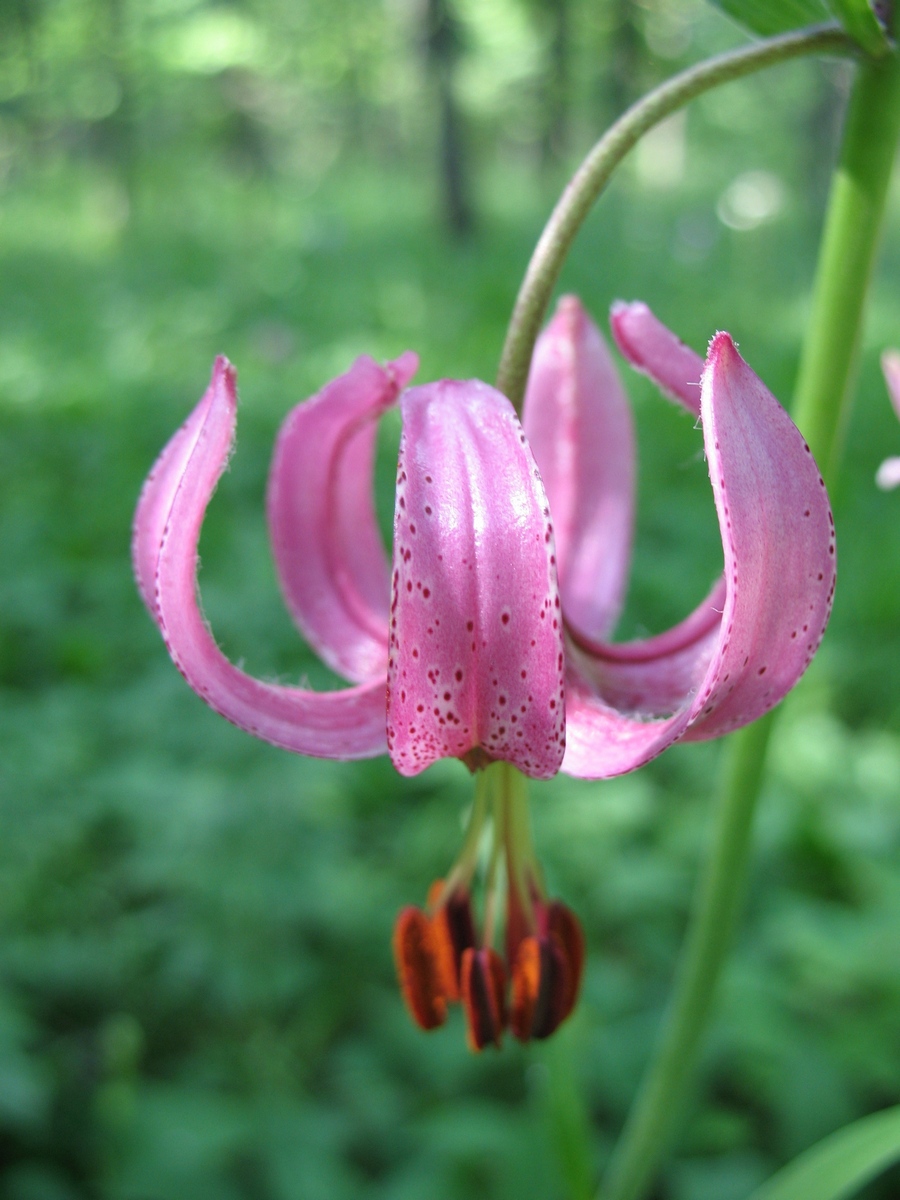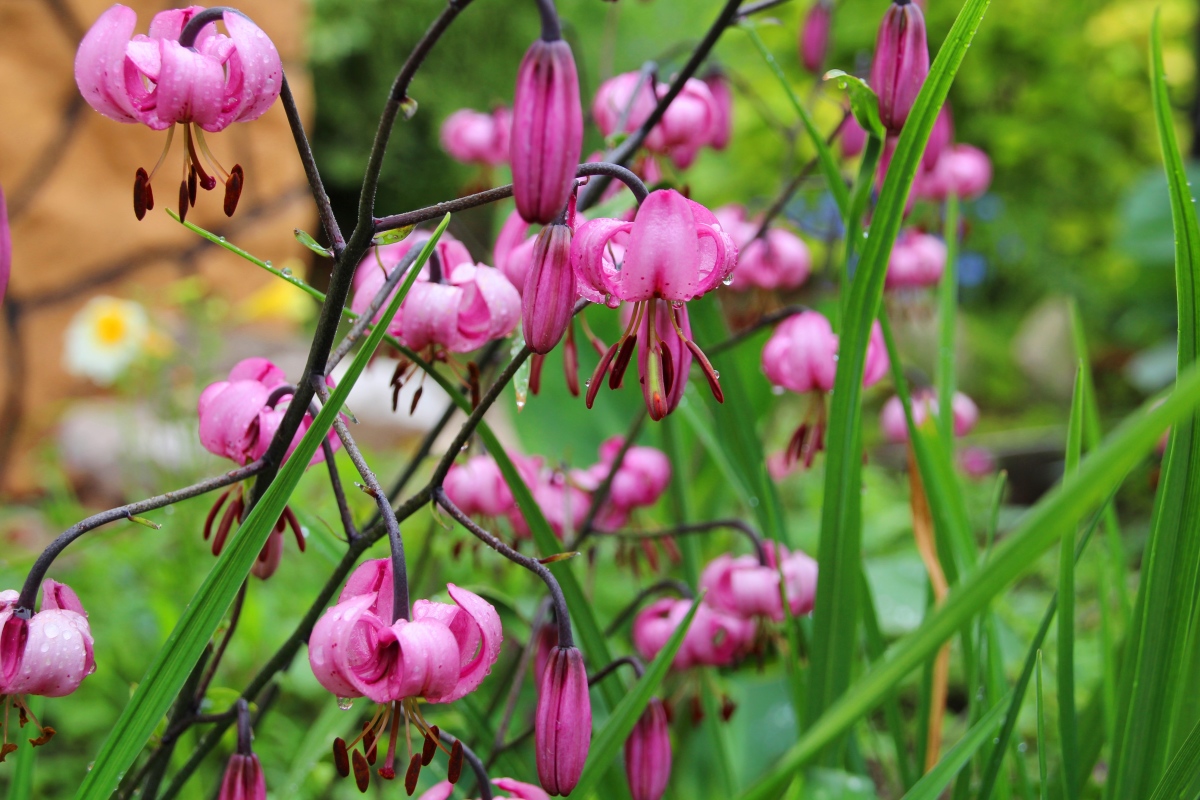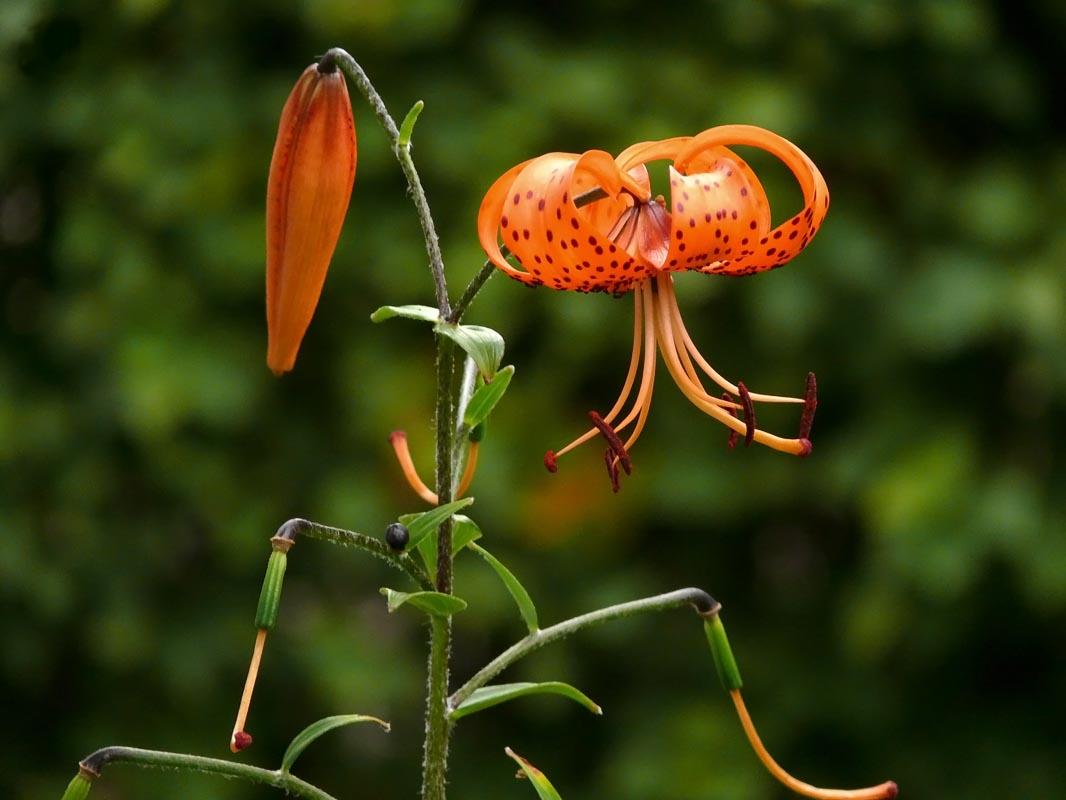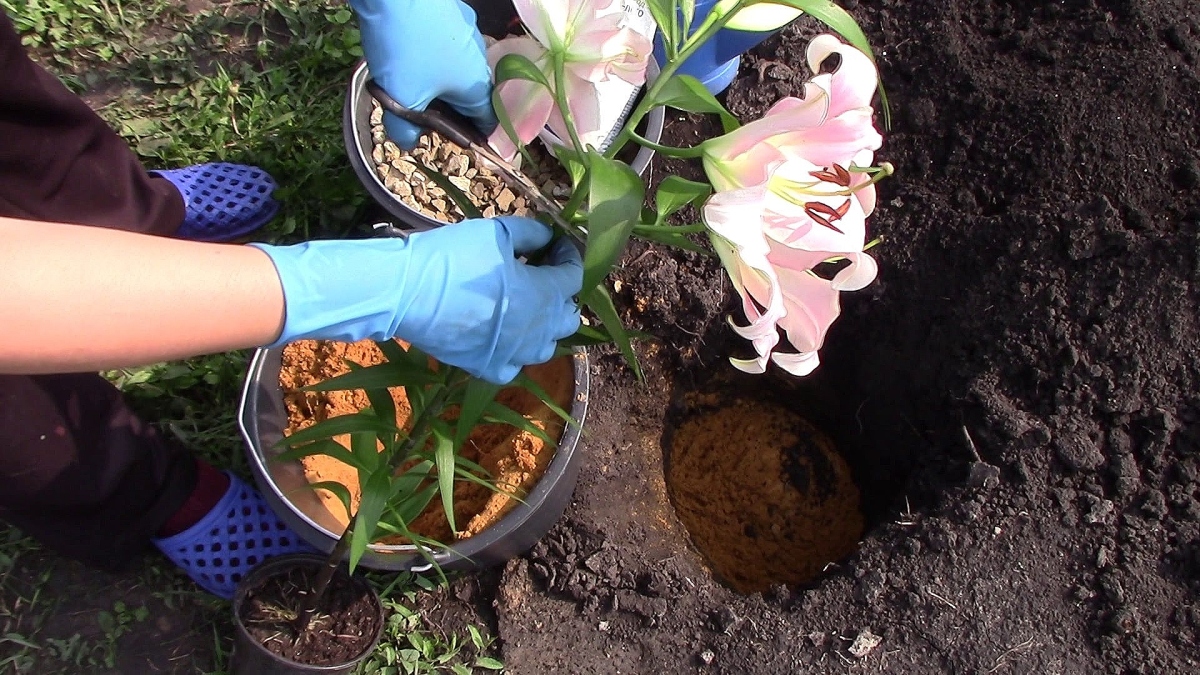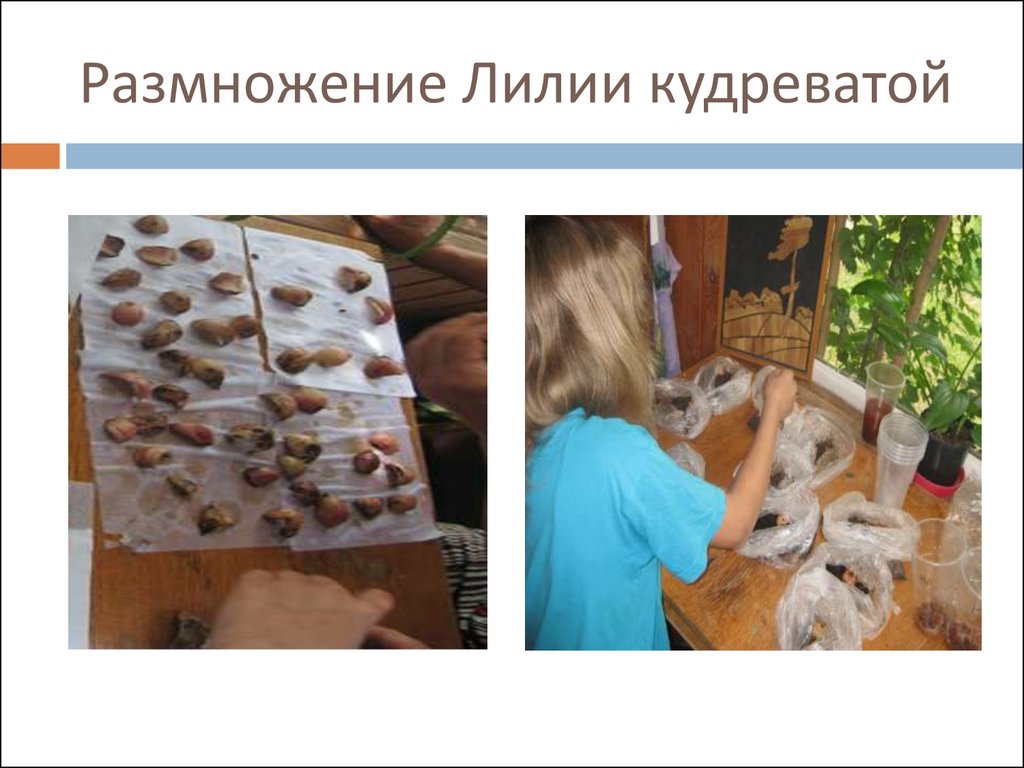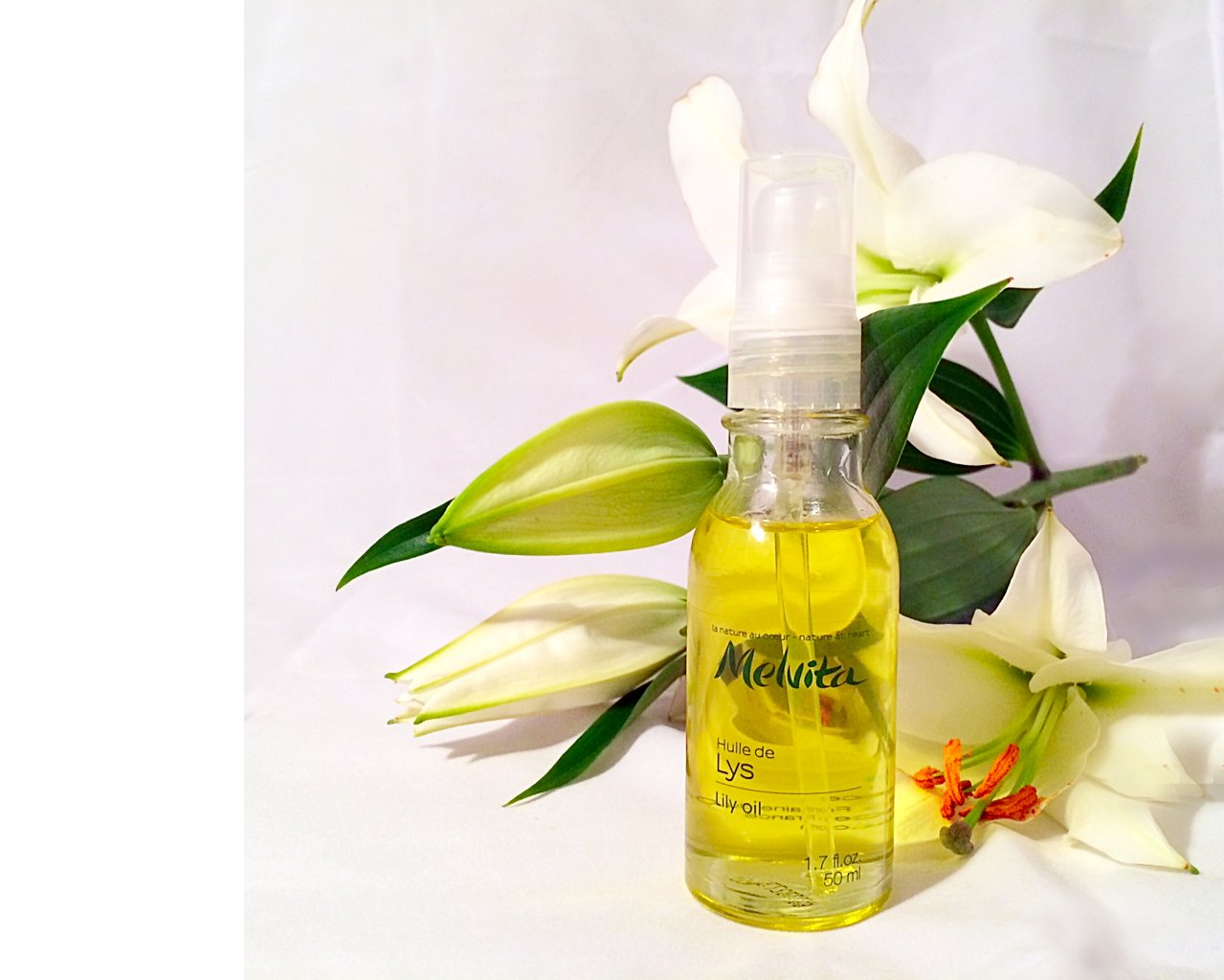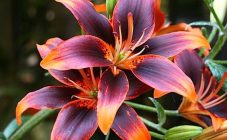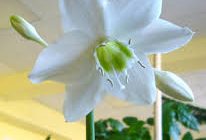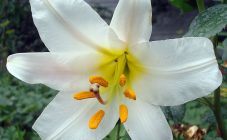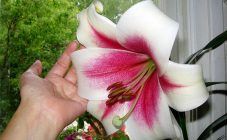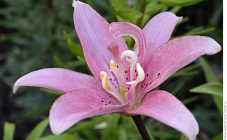Content:
Lily Kudrevataya, or Saranka, is not only a perennial representative of Liliaceae and the owner of useful leaves, buds, stems, which are used in medicine, cooking, cosmetology, floristry and gardening, but also a rare flower, listed in the Red Book and subject to protection by the Organization for protection of nature.
History
Lily of the Tsar's curls is popularly known under the name Saranka.
The natural habitat of the plant is the following regions:
- Europe (broadleaf forest);
- Ural (mountains);
- Western Siberia (mixed forests);
- East (small-leaved forests).
The first mention of the described representative of the Liliaceae came to us from the Middle Ages, where he, called the Sadovaya lily, was a decoration of the garden.
Among the people, the miniature lily has several names: Saranka, Lesnaya, Curly, Tsarskaya, Martagon, Turkish lily. However, it is worth noting that Saranka in science is called Lilia Kudrevataya, and Red Saranka is called Dwarf lily.
Characteristic
To understand how the lily differs from Saranka, we will indicate the characteristic features that show not only the originality, but also the biological uniqueness of the flower in question.
Trunk
The stem system is branched, having a strong, rounded, medium-thick base and thin shoots on which flowers are located. The main trunk reaches a height of up to 2 meters.
Sheet
Forest lily is rich in green mass: there are up to 20 leaves on one trunk. The upper paired leaves are located at the same height, closer to the stems with flower bowls. The lower leaves are grouped in clusters and frame the lower part of the stem in a semicircle. This arrangement in floriculture is called a whorl.
Fetus
In this case, harvest refers to seed pods that form at the base of the leaves and are necessary for one of the propagation options.
"Fruits" have the shape of a hexagon. The seeds look like small plates, colored in different shades of brown.
Flower
The flower's calyx has the shape of a dome or turban: the petals are raised up and bent at the ends, and the core is open to the view and is easily accessible for pollination and collecting nectar. In addition to the unusual shape, it is worth noting the color scheme: the cups can be mono-colored and poly-colored. In the case of the second option, either the main part of the petal has a pattern, for example, specks, or its edges have a different color.
All flowers are grouped in brushes and form the flowing "curls" for which they got their name.
Color
Lily Saranka, or Martagon, has several shade options.
The choice of colors is dictated by the type of flower:
- Terrac Kiti is a pure yellow shade without blotches and multicolored edging.
- Rosalind - is distinguished by a pinkish-lilac color.
- Ivorin is white and pink.
Subspecies
In addition to the main species, it is worth considering the subspecies.
Varieties of Kudrevataya lily
| Part / grade name | Chameleon | Claude Shride | Black Prince | Manitoba Fox |
|---|---|---|---|---|
| Flower | It reaches a height of up to 16 cm. The size is medium. Petals are short, slightly bent. | In size it reaches up to 10 cm. The petals are bent upwards in the form of a turban. | Large in size (25 cm), with red pistil and stamens. | The buds are small in size, up to 6.5 cm long. |
| Color | The petals range in color from white to orange. There are blotches of a different shade along the entire length of the bud | The petals are reddish-purple with a yellowish-orange dotted edging. The stamens and pistil are bright orange. | Black in color with a purple overflow, shiny outside. | The color of the petals is pink-red with yellow dots. |
| The stamens and pistil are also reddish yellow. | ||||
| Bloom | Blossoms at the 7th month of the year and blooms for 2 months. | It opens in the first month of summer. | Blooms in July. Long-term flowering is possible if the flower is in the shade. | Gains color and blooms until mid-summer. |
| Stem | Reaches up to 170 cm in height. | In height - from 120 to 190 cm. | Reaches a height of up to 2 meters. | The height is equal to 1 meter 500 cm. |
| Sheet | The green mass is evenly distributed along the entire stem. | They are arranged in a whorl shape. They have a light green tint. | The green mass is whorled around each flower. | The outer and inner surfaces are glossy and plain. Are distributed evenly along the entire length of the barrel. |
Varieties
In addition to subspecies, varieties also deserve attention.
Kudrevataya lily varieties
| Part / subspecies name | Henry | Pink Tiger | Specialozum | Fire King |
|---|---|---|---|---|
| Flower | Small bud. There are two flowers from one base. | The petals are slightly curved, unlike Saranka, they have a shape close to the classic lily. The buds are small - up to 10 cm in diameter. | Flowers are medium in size, up to 15 cm in length, with deeply curved petals. | The buds are in the form of a cup, which distinguishes them from direct representatives of Saranka. The petals are slightly bent upward, close to the shape of a classic lily. |
| Exudes a vanilla smell. | On one stem, there are up to 9 flowers, grouped in a raceme. | |||
| Color | The buds, stamens and pistil are light yellow in color with a golden tint. | The color of the bud, stamens and pistil varies from light pink to orange with dotted splashes of brown. | The buds are light pink, white-red, yellow-white with bright blotches all over the base of the petal. Stamens, pistil of greenish-orange color: leg - green, tip - orange. | The color of the bud is orange-yellow with a fiery tint. |
| Stem | Differs in large size, densely covered with foliage. Grows up to 2.5 meters in height. | The trunk is low - 120 cm, with a sparsely planted green mass. | The trunk is up to 1.5 cm long, with a sparsely located green mass. | In length it reaches 80 cm. The trunk is thick, strong, abundantly covered with green mass. |
| Bloom | Gains color and blooms from 7 to 9 months of the year. | Blooms and retains color throughout the month of July. | Blossoms and retains its color for 2 months: late summer - early autumn. | Dissolves and retains color for the last 2 months of summer. |
| Sheet | The lower leaves are grouped into whorls, the upper ones are evenly distributed along the entire length of the stem. | The lower leaves are whorled, the upper ones “populate” the base of the trunk in rare rows. | Green mass of a light green hue, unevenly covering the stem of the flower. | Leaves in the form of a cone, with a wide base and a pointed end, light green in color. |
| They are located in a sedentary form, often covering the stem of the flower. |
Landing
Site preparation
In the process of choosing a place for planting, it is necessary to pay attention to the type of flower and, in accordance with its preferences, choose “lived. area".
After choosing a location, it must be prepared by following the following algorithm:
- remove debris on the selected area of land and weed it;
- sprinkle with ash 96 hours before planting and dig thoroughly;
- dig a hole, 15 to 30 cm deep, - the height of the walls depends on the type of Kudrevataya lily;
- put sand, humus and mineral-organic fertilizers on the bottom.
Plant preparation
Due to the fact that lily Kucheryavaya is most often planted with bulbs, the following steps must be taken:
- select healthy specimens - without rot, dents, cracks;
- soak for 2-3 hours in Zircon solution;
- spread the root system well;
- rinse with potassium permanganate for disinfection;
- prepare for transport by placing a medium-sized container of earth.
Disembarkation
After preparing a new "dwelling", it is necessary to take the Curly lily and dive into the new house.
After planting, it is advisable to sprinkle with earth and water abundantly. The planting process is recommended in spring or autumn. During the period of general origin of life, flowers are planted so that they have time to get stronger before winter and easily endure its cold. The autumn period implies a thorough survival of the Kucheryava lily before hibernation.
Also, planting in the autumn involves warming the hole with grass, peat and humus.
Reproduction
To propagate a regal flower, you can use the three options below:
- Scaly:
- choose a healthy onion;
- separate 1-2 scales from it;
- rinse with a solution of potassium permanganate;
- temporarily put in vermiculite and put in a warm place (you can use a battery) for the next 60 days;
- control the moisture content of the substrate;
- pull out the flake with a young embryo from vermiculite and put it in a place with a temperature of 15-20 degrees;
- plant in a permanent place in the spring and mulch;
- water well and monitor soil moisture.
- Bulb division:
- take a perennial bulb (there should be 2 stems with flowers);
- separate the daughter process;
- choose a place on the sunny side;
- dig a hole, 15-20 cm deep;
- place the bulbs at a distance of 35 cm from each other.
- sprinkle with earth and mulch;
- Water abundantly, making sure that no water remains on the surface of the soil.
The regal bush loves both shade and light, however, it blooms longer in the shade, and stronger in the light.
Bulb propagation is rarely used, since daughter shoots appear every 3-4 years. The division should be made only in the last month of summer.
- Seed:
- collect seeds from an adult representative;
- prepare slats or holes, 2 cm deep;
- put seeds and cover with earth;
- water abundantly;
- wait for the first leaf to appear;
- feed with a vitamin and mineral complex.
Care
For Curly lily to please the eye, it is desirable:
- water the bush at the root;
- monitor soil moisture;
- monitor health by taking timely measures to eliminate pests or signs of disease;
- feed 2 times per season: in spring - with vitamin and mineral complexes, in autumn - with a mixture containing potassium and phosphorus;
- carry out preventive measures, reducing the risk of infection with a fungus.
Experts advise to water the bush abundantly only during flowering, when moisture is especially necessary for it, and to irrigate with preparations that prevent the appearance of rot in the rainy season.
Application
Cooking
Martagon bulbs are eaten boiled, fried, fresh and dry. In the latter version, it is enough to dry the scales of the bulbs and flower petals, chop and sprinkle the meat and fish with the resulting powder to give the dishes a pleasant aroma and rich taste.
In addition to being used as a seasoning, the petals can be brewed and drunk like tea, just pour boiling water over them and let it brew for half an hour, then remove from the water and cool it down.
Cosmetology
Masks, which contain flowers of a miniature lily, have a beneficial effect on the skin, soothing it and smoothing out folds and wrinkles. In addition to its calming effect, the composition can become an excellent nutrition for the dermis, enriching it with vitamins.
Floristics
The royal flower is used to compose bouquets of volzhanki, aconites, black cohosh, as it gives such a composition a peculiar chic and elegance, due to its miniature size, compared to the indicated giants.
Gardening
In the case of growing a curly flower, it is advisable to plant it in the neighborhood not only with flowers, for example, representatives of the Pink, Peony, Kasatikov families, but also with coniferous decorative Christmas trees.
The medicine
Curly lily bulbs are used as a medicine to cure acne (chop the onion, mix with bread and apply to the eel.)
A decoction of the flower is recommended for the treatment of the gallbladder.
Disease prevention
The representative of the Liliaceae is considered unpretentious to weather conditions, however, it does not tolerate rainy seasons: due to an excess of moisture in the soil, the plant can get sick with Botrytis fungus and / or rot, therefore, to reduce the risk of infection, you must follow the instructions below:
- treat the young sprout with Fitosporin or Fundazol;
- take a break for a month and re-spray the plant with the same product;
- repeat the procedure every 2 months in case of a prolonged rainy season.
In addition to viral diseases, the flower is susceptible to attack by a firefighter beetle and a yellow fly. The beetle is distinguished by a red body and black dotted whiskers. The pest feeds on stepchildren and lays the larvae in the form of red capsules, which, in turn, bring death to the flower. To fight a firefighter, it is recommended to use means that kill the Colorado potato beetle, for example, Commando, Skor, Topaz.
The fly has a yellow-black body and white transparent wings. The favorite delicacy of the pest is the buds, which wither and fall off after the attack of the parasite. To combat the yellow pest, it is recommended to use the Aktara remedy, treating the plant once every 30 days.
Pros and cons
The benefits of a flower include:
- high frost resistance;
- pickiness;
- possibility of application in several areas of life;
- ease of reproduction.
Among the disadvantages it is worth noting:
- weak immunity - susceptibility to fungus;
- whimsical lighting - in the dark it blooms for a long time, but not abundantly, in the light - on the contrary;
- the presence of personal pests: a fire beetle, flies.
Summing up, it is worth noting that a detailed description of the Kudrevataya lily was considered. In the course of consideration of this representative of the Lileinykh, it was found out that a flower can be not only beautiful and exotic, but also useful in the field of health and beauty.
